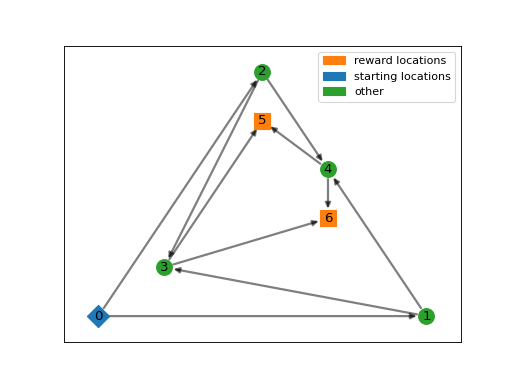Spatial-Cueing / Posner Task
This is not a typical reward related learning task, but rather a task from visual attention [Posner, 1980].
In this task, rather than learning reward contingencies the participant learns the validity of a pre-cue.
Or in graph form:
(Source code, png, hires.png, pdf)

Task description
In this task, participants are asked to attend a central fixation cross, after a while a central pre-cue appears, indicating the likely location of the next target stimulus. Participants are then asked to indicate the side the target stimulus appeared, pressing either left or right.
If they are correct, they get a reward.
As can be seen in the graph, the task is controlled by the agent_location
or starting_position in that each cueing condition, has a separate graph
structure.
M. I. Posner. Orienting of attention. The Quarterly Journal of Experimental Psychology, 32(1):3–25, February 1980. doi:10.1080/00335558008248231.